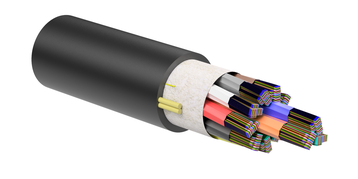Unprecedented volumes of incoming data generated by billions of connected devices are placing pressure on data center operators to maintain seamless operations. Devices are getting smarter, faster and more powerful, and fast-rising demand for adequate data storage and robust processing power are threatening the ability of data centers to deliver. With Asia-Pacific slated to become the biggest data center market in the world in 2020, and big data revenue reaching $14.7 billion this year, data generation will only continue to rise. To meet the increased needs of today and the future, how can data centers grow their capacity and operate at greater efficiency and profitability?
Scalability to meet future customer demands
From an infrastructure perspective, a data center’s ability to scale, as and when needed and to changing customer, business and application needs, is critical. This flexibility will support future bandwidth and transmission speeds required by customers and end-users, enabling operators to meet future capacity needs seamlessly.
One innovation operators can leverage to optimize their data center is a Base-8 optical cabling system. Base-12 connectivity has served the data center industry well for almost twenty years. However, transceiver, switch, server and storage makers are already using and developing transceiver types based on Base-8 connectivity.
For Ethernet transmission ranging from 40G to 400G, all roads lead to two-fiber and eight-fiber connectivity solutions. With the ability to maximize per rack density and provide competitive advantage when scaling, Base-8 connectivity enables 100 percent fiber utilization without the need to purchase conversion modules, and minimizes total cost of ownership (TCO). As a result, deploying a future-ready Base-8 design as a data center connectivity solution will enable simple, efficient and cost-effective migration to speeds of 40, 100 and even 400G.
Maximizing space with greater fiber density
2-tier spine-and-leaf architecture is increasingly replacing the traditional 3-tier network as it facilitates faster movement of data across physical links in the network. At the same time, migrating to a spine-and-leaf architecture dramatically increases the number of fibers required to serve interconnection in the data center campus. To reap the reduced latency benefits of spine-and-leaf, the core challenge for data centers is to optimize the physical infrastructure’s existing duct space and install fibers with higher fiber-count.
Only a few years ago, 864-fibre cables were standard in campus networks. Today, higher fiber counts of 3,456 fibers are now available, and fit within standard 2-inch duct systems.
These extreme-density ribbon cables contain up to 700 percent more fibers than traditional loose tube cables. With such high fiber counts, they offer greater packing density and enable efficient use of limited duct space. This way, migration to 2-tier spine-and-leaf can be achieved without large capital investment. Installation and cable restoration in the event of cuts is also faster, thus greatly reducing the cost of installation, manpower deployment and downtime.
Reducing latency between data centers
Data centers need to connect to each other to share and process data before transmitting a response back to the requesting device. The challenge is to reduce latency or delays incurred during the transfer of data. Mission-critical applications stipulate that the latency of response from the data centre needs to be 10 times better than what exists today.
Data center interconnect technology can help to enable fast transmission of data over long distances between data centers. Using advanced optical fiber that combines both ultra-low-loss (ULL) and larger effective areas, the range of data center interconnect links can be extended by up to 25 percent, enabling access to approximately 50 percent more data center locations compared to typical single-mode fiber. This not only enables greater access to suburban customers, but also opens up more options for data center locations and increased network resilience to power outages.
With efficient long-haul data center interconnects, the number of regenerators needed can be minimized and amplification sites eliminated, even as higher data rate upgrades with more stringent Optical Signal-To-Noise Ratio (OSNR) requirements are planned.
Future-ready design for competitive advantage
With continued requirement for data centers to expand and scale, these data center technologies enable operators to operate in efficiently to meet the requirements for current and future data rates – all the way to 400G.
Meeting future capacity requirements starts from designing-in optimized connectivity and cabling for future scalability. As we progress into a connected-everything world, scalability ensures the infrastructure is able to deliver growth as needed, without impacting total cost of ownership.
Data center operators who design their infrastructure to meet future capacity needs will find themselves ahead of competitors no matter how fast things change. Now is truly the time for operators to leverage today’s enabling technologies for a next-generation data center that is ready for the demands of the future.


